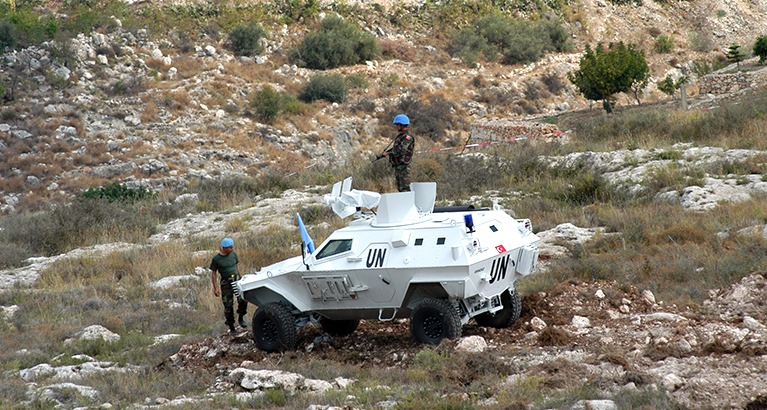The studies will be presented at the Biennial International Conference of the Inter-University Seminar on Armed Forces and Society by Neil Stott, Co-Director of the Cambridge Centre for Social Innovation and Management Practice Professor of Social Innovation at Cambridge Judge.
Social innovation practice focuses on social inclusion. It engages those who are experiencing social, economic or environmental harms and those who wish to make change. The aim is to build individual and collective agency to disrupt and change norms, behaviours, and practices using legitimate institutional practices to ensure they work better for all.
Why social innovation offers a fresh approach for deployment of peacekeeping forces
“I firmly believe taking a fresh approach using social innovation principles offers viable solutions for both the United Nations and the military more widely”, says Professor Neil Stott, who is a co-author of both papers. He took an interest in defence matters after meeting people with military backgrounds in his work at the Cambridge Centre for Social Innovation and the Master of Studies in Social Innovation at the Business School.
“The UN, like the military as an action-oriented organisation, often tries to address the symptoms of social problems at the expense of understanding the root causes. Only through understanding whether a problem is internally systemic (social injustice), appearing in the social environments in which the peacekeepers are deployed (social destabilisation) or actually physically destructive (social destruction) can decision makers direct efforts that strike at the heart of the issue.”
The first paper – “The keepers and the kept: UN peacekeeping and social innovation” – explores how a better understanding of social problems that impact on, are exacerbated or created by UN Peacekeepers may guide improvements in UN decision making, innovation and performance.
“The complexities of the social environments in which contemporary peacekeepers find themselves preclude templated solutions, meaning these blue helmets must be armed with skills and knowledge that surpasses that necessary for high-end combat operations,” the study finds. “We believe social innovation offers a unique lens to direct both the framing and action necessary for the UN to achieve its goal of saving ‘successive generations of the scourge of war’.”
Study co-authors:
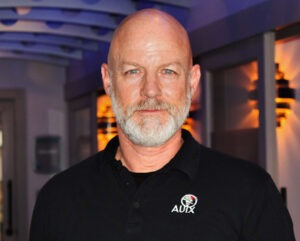
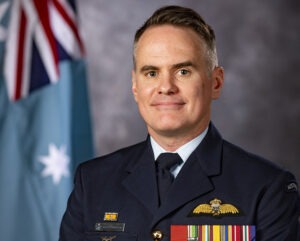
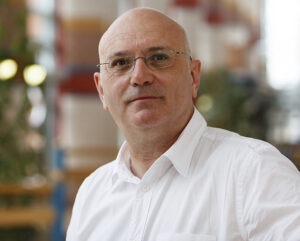
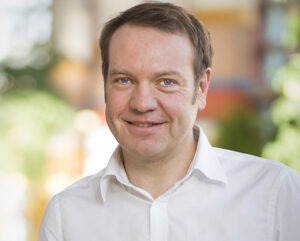
Why the UN faces challenges as a ‘meta organisation’
The research categorises the UN as a meta-organisation or an ‘organisation of organisations’, which aims to amplify the interests of members who share common goals through collective action.
“When member interests align, the UN’s collective action can be incredibly impactful”, the study finds. “Unfortunately, meta-organisations can be prone to conflicts while lacking the capacity to resolve them. For example, ‘autonomy and identity’ tensions can emerge when members’ interests clash with that of the meta-organisation which inhibits decision making.”
“When the UN makes a peacekeeping decision, it faces a significant disadvantage because most of the resources required for peacekeeping operations belong to member states and can be challenging to mobilise. This lack of readily available resources forces the UN to adopt alternative strategic approaches to address emerging international crises.”
The size and complexity of the UN also presents a significant challenge in encouraging an innovation culture.
“The complicated relationship between member states, the UN Secretariat and individual peacekeeping missions works against any efforts to establish a path through which strategic direction – and by extension, programs of innovation – can logically flow to inform the tactical activities of peacekeepers,” the paper says.
Demand for peacekeeping forces will grow in the future due to climate emergency
The timing of this paper is crucial, as demand on the UN is set to grow. The need for sanctioned military operations is likely to increase in line with the growing frequency of conflict for resources, arising from political and climate emergency related sources. These conflicts will compound existing social, economic, religious, and racial fault lines. The study finds the ability of the UN to respond is in doubt as it struggles to resource and conduct existing peacekeeping missions, let alone meet future demands. The willingness of member states to act in life threatening situations and put peacekeepers in harm’s way is also in decline.
A combination of factors – short deployment tenures and divergent training procedures, along with cultural, religious and language differences – work against efforts to establish the cultural and operational affinity found in a national military. As such, some peacekeepers see their role as executing national foreign policy objectives rather than as a delegated instrument in the service of the UN.
Three key priorities the United Nations needs to address
Professional military education and training courses rarely reflect on the role of the military in contributing to social injustice, destabilisation, or destruction, but rather focus on the military’s preferred self-identity as the solution to security dilemmas. Working with the US Air Force Air University in Montgomery, Alabama, the co-authors have developed a framework to enhance the leadership and innovation curriculum through a consideration of social problems and social innovation practices.
1
Social injustice
Within a meta-organisation, members decide if a social problem is worthy of attention, but achieving consensus can be a daunting task. For example, the UN pays particular attention to gender issues and tackling sexual harassment and violence in Peacekeeping – part of the Women Peace and Security (WPS) agenda. The study notes an increasing number of member states lack a commitment to the WPS agenda and Russia has questioned whether WPS should be in the Security Council’s remit.
2
Social destabilisation
Social problems impacting on, exacerbated by, or caused by the actions of the UN, deployed UN Peacekeepers, militaries and non-state actors. Destabilisation and potential future conflict is generated by threats (such as climate change), the externalities of UN Peacekeepers presence (such as prostitution and sexual abuse) and internal UN decision making (such as poorly framed mandates).
3
Social destruction
Problems caused by the use of physical violence or failure to protect life and critical infrastructure, by anyone in the peacekeeping environment.
Study makes 3 recommendations for the United Nations
The following recommendations to overcome UN Peacekeeping challenges were presented at a high-level panel discussion and workshop hosted by the Permanent Mission of Australia to the UN in New York:
1
Tackle social justice
There is a need to tackle social injustice within the UN, engaging in research which includes all parties in the Peacekeeping space, including the peace-kept, in order to realise the key issues, barriers to change and potential solutions. This may include improved policy, regulations, enforcement and training. A more contentious alternative would be to reconsider a standing reserve, rapid response, or permanent UN Force.
2
Social stabilisation
This focuses on the prevention of conflict, stabilising the situation through UN intervention to prevent further loss of life or social destruction. Particular importance should be given to preventing potential climate related conflicts such as access to life-sustaining resources (such as water and food). Intervention planning would include legal, political, social, environmental, and military options.
3
Social regeneration
Rebuilding infrastructure and institutions following conflict is crucial. The aim would be holistic plans which covers material, infrastructure, ecological, social and political regeneration. In a Peacekeeping context, integration of the peace-kept may well have to be phased, but the goal is a bottom up, self-actualised regeneration.
Being receptive to innovative solutions makes change possible for peacekeeping and defence
“It’s vital the UN and the security sector step out of their comfort zone and are receptive to ideas coming from disciples like social innovation, which may be very different from where they have looked for solutions in the past,” says co-author Dr Jarrod Pendlebury, a Research Fellow at Cambridge Centre for Social Innovation who is Australia’s senior Defence representative to the UN and a Group Captain in the Royal Australian Air Force.
“Answers can be found beyond the battlefield and lived experience, and social innovation offers a rich array of perspectives and tools to address the most acute problems facing the UN as it carries out its mandate to support international peace and development. An immediate concern is the performance and accountability of the existing organisation, and we have outlined a series of challenges that we believe are key priorities for the UN to address.”
New study explores US Airforce promotion barriers for Asian American Pacific Islanders
The study examines the experiences and motivations of Asian American Pacific Islander (AAPI) officers in the United States Air Force (USAF). Despite a long history of distinguished service in the United States military, AAPI officers are 65% less likely than their white peers to become commanders in the USAF. They remain underrepresented at entry into the service, are promoted at below average rates, and leave the service earlier and at higher rates than their white counterparts.
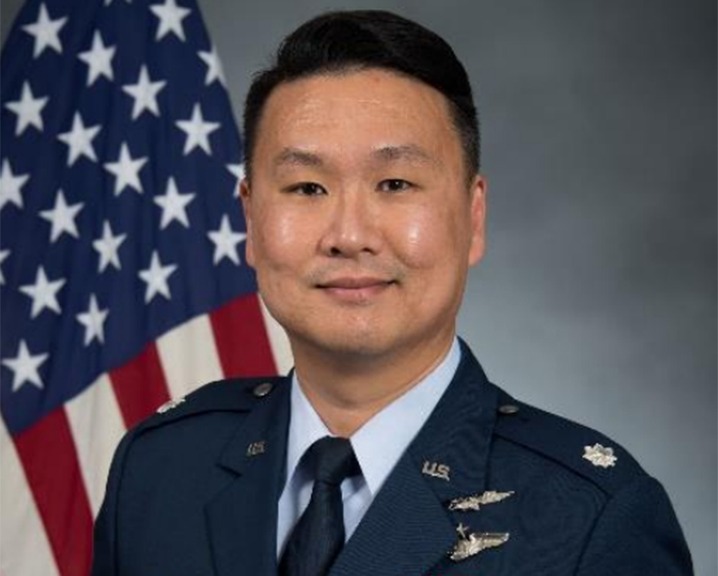
The study – entitled “Dismantling the bamboo ceiling: Asian American Pacific Islanders in the United States Air Force” – suggests that a combination of individual, cultural, and organisational barriers scaffold and reinforce a ‘bamboo ceiling’ – an AAPI-specific variation of the glass ceiling.
“The most fascinating finding from our study was the discovery that AAPIs can prove to be their own worst enemy”, explains co-author Lieutenant Colonel John C.W. Yi of the US Air Force, who is studying for a Mst in Social Innovation at Cambridge Judge. “Strong AAPI voices not only deny the existence of a bamboo ceiling, but actively discredit peers who may have personally experienced it. Given the US military’s growing demand for service members with language and cultural expertise in the Indo-Pacific region, it is also an operational imperative to identify and eliminate barriers to service.”
How academics interviewed social intrapreneurs within the USAF
The research revolved around discussions with a team of mid-level USAF officers in 2020 who had formed an advocacy group, the Pacific Islander and Asian American Community Team (PACT). It explored how these grassroot ‘social intrapreneurs’ – individuals who work to address social challenges from within established organisations – were working to identify and remove barriers to promotion. In addition to these interviews, the research analysed USAF and PACT documents, as well as social media forum posts from AAPI members of a private Facebook group with 2700 members.
The study focused primarily on captains with 4 to 8 years of commissioned service and majors with 8 to 15 years. High-performing officers at the 12-to-18 year points in their careers typically compete for squadron command, a key prerequisite for promotion to senior leadership.
Study tested Critical Asian Theory and the existence of a ‘bamboo ceiling’
The paper tested two of the most prevalent academic theories:
Critical Asian Theory
This includes the ‘model minority myth’, which depicts AAPIs as a monolithic group which has overcome barriers to success through their hard work and high levels of education. However, this misperception can lead people to believe that AAPIs do not require any of the special consideration or assistance afforded to other minority groups.
There is also the “perpetual foreigner syndrome” where personnel are considered outsiders in American social and professional circles. For example, being complimented on their English fluency, even when they are several generations removed from their ancestral homelands.
Bamboo ceiling
AAPIs appear to encounter an invisible but powerful barrier that halts their progress at a certain point in their careers. This is often down to perception. The study finds AAPIs are seen as smart and competent but not particularly friendly.
They are praised as being quiet and hardworking but may therefore be viewed as weak and passive in an organisation that values assertive leaders. It means AAPIs may excel at the lower-to-mid-tiers, but not go any higher.
Three key reasons why AAPIs face barriers, and the presence of internalised racism
1
Scaffolding of the bamboo ceiling
This is created by a “cultural mismatch” between traditional familial values of AAPI personnel and the institutional values of USAF. It includes negative experience with compulsory military service in Asia, the lack of support for extended family (registering elderly family members as dependents) and religious beliefs.
There are also organisational barriers to advancement, including a lack of AAPI mentors and role models, and pilots are the service’s least diverse career field. “AAPI pilots are so uncommon that several interviewees shared anecdotes of AAPI officers in flight suits being mistaken for foreign exchange officers from Asia, rather than as fellow Americans”, the study finds.
2
Reinforcing the bamboo ceiling
This happens due to negative stereotypes of AAPIs as passive and weak leaders, as well as the pervasive “othering” of AAPIs as outsiders and foreigners. For example, the avoidance of eye contact with elders or superiors is an expectation in many Asian cultures but is interpreted as a lack of confidence or respect in the military.
3
Internalising the bamboo ceiling
AAPIs themselves undermine the efforts of the PACT due to their own internalised racism. This forms when minority groups begin to accept, believe, and internalise negative ideas and behaviours about themselves that are imposed by the dominant group.
In addition, those who overcome adversity can sometimes be the harshest critics of their peers, and there are tensions within group. “Several interviewees observed tensions between members of East Asian and South Asian descent, noting that some Indian Americans don’t like being grouped with other AAPIs, because they feel unwelcome within the larger AAPI group”, the study notes. Overall, the AAPI community lacks consensus on whether a problem even exists.
Acknowledging cyberspace operations in the Air Force could open up promotion opportunities
The study notes that the USAF is committed to attracting and retaining a diverse and inclusive force. Following a recruitment drive there was an increase in AAPI applicants from 9% in 2014 to 11.5% in 2022.
Other inclusive efforts have also been made. Members with names not easily recognisable by Western norms can often be misidentified as female in email conversations. But by partnering with the Lesbian, Gay, Bisexual, Transgender, and Queer/ Questioning Initiative Team, the servicemembers advocated for a policy change to allow members to include their preferred pronouns in official emails. They also successfully revised the USAF-wide anti-terrorism training course which provided historical examples of exclusively Asian terrorists.
“USAF has tried to achieve greater cohesion through recruitment and adopting some requests from AAPI personnel,” says study co-author Neil Stott. “However, to dismantle the ‘bamboo ceiling’ it needs to go much, much further. USAF could reevaluate its custom of disproportionately favouring combat pilots, relative to officers from other career fields, for promotion to senior leadership positions, for example. This practice has resulted in the organisation’s top tier being solely made up of white male pilots. This shift would also acknowledge the growing importance of non-aviation domains such as cyberspace operations. I would also encourage further studies examining the barriers facing AAPI women to really drill down into the causes for lack of promotion of this group of service members with such a long and illustrious history in American military history.”
About the conference papers
The Keepers and the kept: UN peacekeeping and social innovation
It is co-authored by academics at the Cambridge Centre for Social Innovation: Neil Stott, Management Practice Professor of Social Innovation; Jarrod Pendlebury, Associate Research Fellow at Cambridge Centre for Social Innovation and Group Captain in the Royal Australian Air Force; Dr J. William “Bill” DeMarco, Associate Research Fellow at Cambridge Centre for Social Innovation and a retired Colonel in the US Airforce; Paul Tracey, Professor of Innovation and Organisation at Cambridge Judge; and Lucy Caines, a PhD candidate at Cambridge Judge Business School.
Dismantling the Bamboo Ceiling: Asian American Pacific Islanders in the United States Air Force
The study is co-authored by Lieutenant Colonel John C.W. Yi, a member of the US Air Force and MSt in Social Innovation student at Cambridge Judge, and Neil Stott, Management Practice Professor of Social Innovation at Cambridge Judge Business School.
Featured faculty
Neil Stott
Management Practice Professor of Social Innovation
Paul Tracey
Professor of Innovation and Organisation
Featured research
Stott, N., Pendlebury, J. and Demarco, W. (2023) “The keepers and the kept: social innovation in United Nations Peacekeeping.” In: Inter-University Seminar on Armed Forces and Society Biennial Conference, 13-15 October 2023, Reston, VA, USA.
Yi, J. and Stott, N. (2023) “Dismantling the bamboo ceiling: Asian American Pacific Islanders in the United States Air Force” In: Inter-University Seminar on Armed Forces and Society Biennial Conference, 13-15 October 2023, Reston, VA, USA.


